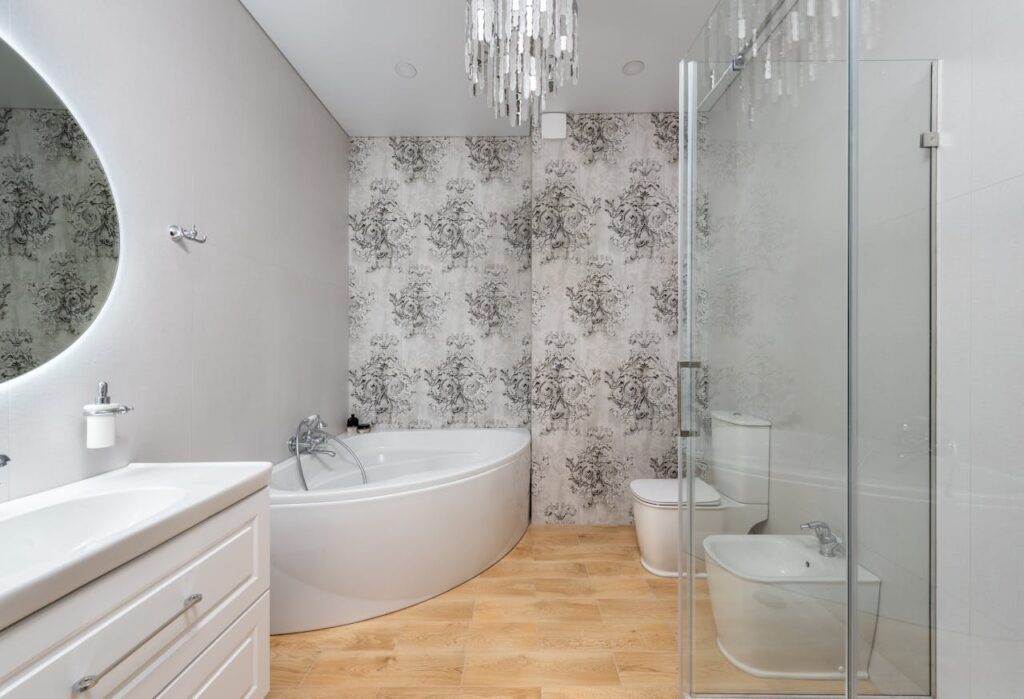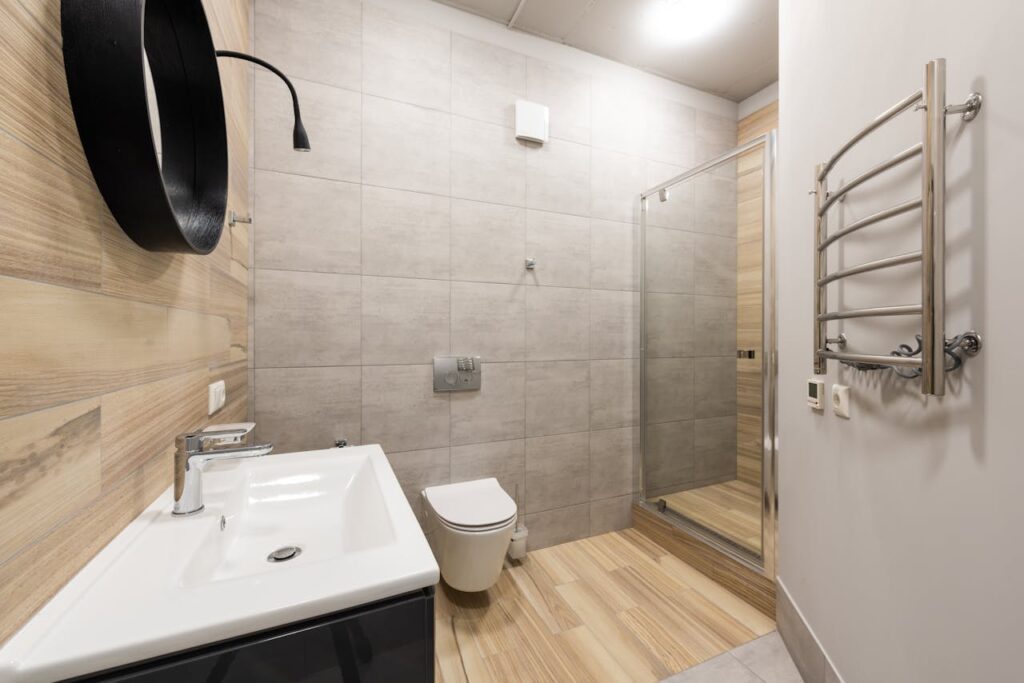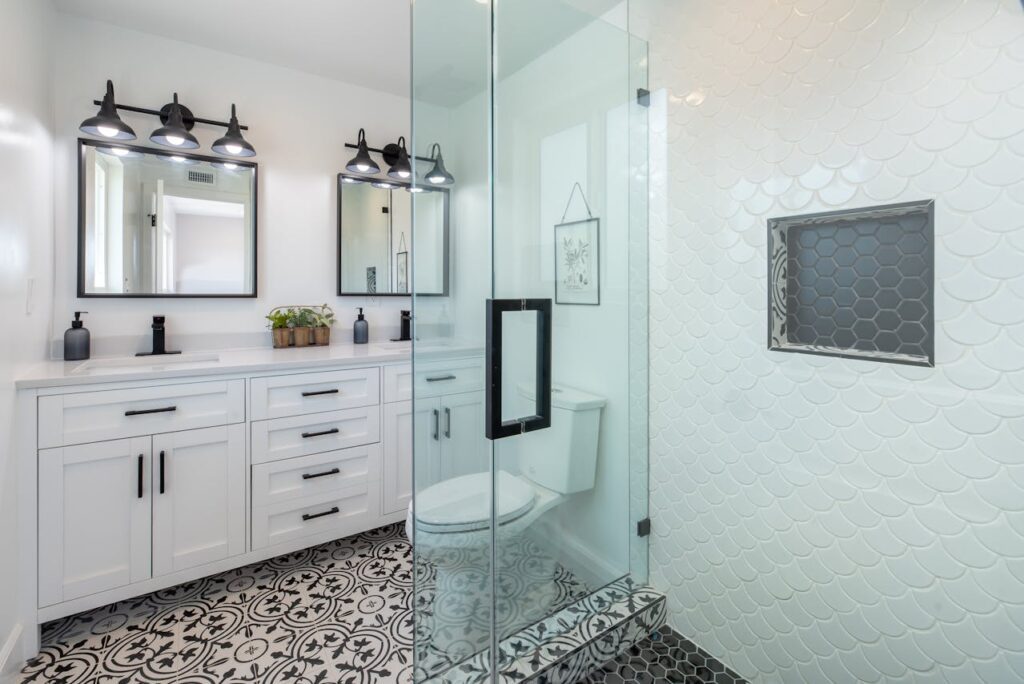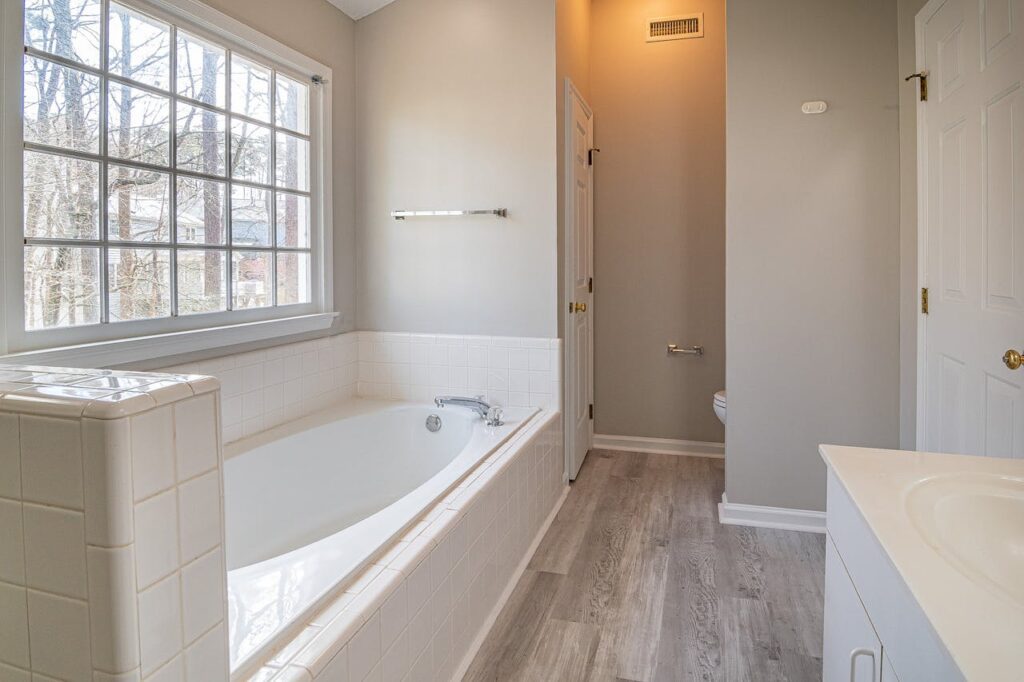Tile flooring is one of the most popular choices for bathrooms, and for good reason. It’s durable, moisture-resistant, and aesthetically versatile. However, ensuring your bathroom tile floors look stunning for years to come requires more than just picking a tile and having it installed. There are specific considerations when selecting, installing, and maintaining bathroom tiles that will extend their lifespan. In this comprehensive guide, we’ll explore 8 expert tips to make your tile flooring last, providing the detail and insight needed to get the most out of your investment.
1. Choose The Right Tile Material
Selecting the right tile material is the foundation of a long-lasting bathroom floor. Not all tiles are created equal, and some materials are better suited to the challenges of bathroom environments.
Porcelain And Ceramic Tiles
Porcelain and ceramic are two of the most popular materials for bathroom flooring. Both are durable, water-resistant, and available in a wide variety of designs. However, porcelain is denser and less porous than ceramic, making it slightly more durable and better suited for high-moisture areas. Porcelain tiles are often more expensive than ceramic, but the added durability and water resistance can be worth the investment in a bathroom setting.
Natural Stone Tiles
Natural stone tiles, such as marble, travertine, and slate, bring a luxurious, organic feel to a bathroom. However, they require more maintenance than ceramic or porcelain tiles. Stone is porous, meaning it must be sealed regularly to prevent moisture damage. Additionally, stone tiles can be slippery when wet, so consider choosing tiles with a textured surface or applying a slip-resistant coating to ensure safety.
Glass Tiles
While not as commonly used for bathroom floors, glass tiles are another option that can add a unique, reflective quality to your bathroom. They are highly water-resistant, but they can be slippery and may not be as durable as ceramic or porcelain for floor use. If you do choose glass tiles for your bathroom floor, opt for smaller tiles to minimize the chance of cracking and to provide a better grip.
2. Opt For Slip-Resistant Tiles
One of the most important considerations in a bathroom is safety. Bathrooms are often wet, which increases the risk of slips and falls. When choosing tiles for your bathroom floor, it’s essential to select tiles with a slip-resistant finish or texture.
Textured Tiles
Tiles with a textured surface, such as those with a matte or rough finish, provide more traction than smooth, glossy tiles. Textured surfaces can help prevent slipping, especially in wet areas like bathrooms. Some natural stone tiles, such as slate, are naturally textured and offer excellent slip resistance.
Small Tile Patterns
Smaller tiles with more grout lines offer additional grip, reducing the risk of slips. Mosaic tiles, for example, are commonly used in shower floors due to their small size and numerous grout lines, which help create a non-slip surface. Even if you’re not using mosaic tiles for the entire floor, incorporating smaller tiles in key areas, such as near the shower or bathtub, can enhance safety.
3. Consider Tile Size And Layout
The size and layout of your bathroom tiles can impact both the look of the space and the longevity of the tile installation. Larger tiles may make a small bathroom appear more spacious, while smaller tiles can add intricate detail. However, larger tiles may be more prone to cracking if the subfloor isn’t perfectly level.
Large VS. Small Tiles
Large tiles, such as 12×24-inch porcelain or ceramic tiles, have fewer grout lines, which can create a cleaner, more streamlined look. However, they require a perfectly level subfloor to prevent cracking or uneven installation. Large tiles can also be challenging to work with in small bathrooms with lots of corners and fixtures.
Smaller tiles, such as 4×4-inch ceramic tiles or mosaic patterns, are easier to install in bathrooms with tight spaces and awkward angles. The numerous grout lines in small tile installations also provide better grip, as previously mentioned.
Tile Patterns
In addition to tile size, the pattern in which the tiles are laid can also impact the longevity of the floor. Simple grid patterns are the easiest to install and less prone to error. More complex patterns, such as herringbone or diagonal layouts, require precise measurements and cutting. Improper installation can lead to uneven tiles, which can crack over time.
4. Ensure Proper Subfloor Preparation
The longevity of your bathroom tile floor heavily depends on the condition of the subfloor beneath it. The subfloor must be properly prepared to provide a stable, level foundation for the tiles. If the subfloor is uneven, improperly installed, or susceptible to moisture damage, your tiles can crack, shift, or become dislodged.
Assessing The Subfloor
Before installing the tile, assess the condition of the subfloor. It must be clean, dry, and free of any cracks or imperfections. If the subfloor is uneven, it can be leveled with a self-leveling compound. Any cracks or gaps should be filled with an appropriate filler to prevent movement that could cause tiles to crack.
Moisture Protection
Bathrooms are naturally moist environments, so it’s crucial to ensure the subfloor is protected from water damage. Installing a moisture barrier, such as a waterproof membrane or cement backer board, can help prevent water from seeping into the subfloor and causing damage. Without proper moisture protection, tiles can become loose or damaged over time due to swelling or rotting of the subfloor.

5. Use High-Quality Tile Adhesive And Grout
The adhesive and grout you use to install your tiles play a critical role in the longevity of your bathroom floor. Poor-quality adhesive or grout can lead to tiles shifting, cracking, or becoming dislodged over time.
Tile Adhesive
When selecting tile adhesive (also known as thin-set mortar), choose a product specifically designed for wet environments like bathrooms. Cement-based adhesives with added latex are ideal for bathroom floors because they provide strong bonding and flexibility. Avoid using mastic or pre-mixed adhesives in high-moisture areas, as they may not provide the necessary water resistance.
Grout Selection
Grout fills the gaps between tiles and helps keep them in place. There are two main types of grout: cementitious and epoxy. Cementitious grout is more traditional and available in a wide range of colors, but it must be sealed to prevent moisture absorption. Epoxy grout, on the other hand, is highly water-resistant and doesn’t require sealing, making it ideal for bathrooms. However, it’s more expensive and harder to work with than cementitious grout.
6. Seal The Tiles And Grout Regularly
Sealing your bathroom tiles and grout is a critical step in ensuring their longevity. Even if you choose moisture-resistant materials, sealing provides an extra layer of protection against water damage, staining, and mold growth.
Tile Sealing
Most ceramic and porcelain tiles don’t require sealing, but natural stone tiles, such as marble or travertine, are porous and must be sealed to prevent moisture absorption and staining. Depending on the type of stone and the level of traffic in your bathroom, you may need to reseal the tiles every 6 to 12 months.
Grout Sealing
Cementitious grout is porous and can absorb moisture, leading to staining, mold growth, and weakening over time. Sealing the grout helps protect it from water damage and makes it easier to clean. You should reseal the grout at least once a year, or more frequently in high-moisture areas such as showers.
7. Maintain Proper Cleaning And Care
Regular cleaning and maintenance are essential for keeping your bathroom tile floors in top condition. While tile is relatively low-maintenance, there are specific cleaning practices that will help extend the life of your tiles and grout.
Use Mild Cleaners
Harsh chemicals can damage both tiles and grout, so it’s best to use mild, pH-neutral cleaners specifically designed for tile. Avoid using bleach, ammonia, or acidic cleaners, as they can erode the grout and damage the finish on natural stone tiles.
Clean Grout Regularly
Grout is more susceptible to staining and mold growth than tiles, so it’s essential to clean it regularly. Use a grout cleaner or a mixture of water and baking soda to scrub the grout lines, and make sure to dry the area thoroughly after cleaning.
Avoid Excess Water
Even though tiles are water-resistant, excessive moisture can still damage the grout and subfloor over time. After cleaning, make sure to wipe up any excess water and ensure the bathroom is well-ventilated to allow moisture to evaporate.
8. Address Cracks And Damage Promptly
Even with the best materials and installation practices, tiles can still crack or become damaged over time. It’s essential to address any issues as soon as they arise to prevent further damage to the floor.
Repair Cracked Tiles
If you notice a cracked tile, don’t ignore it. A cracked tile can allow water to seep into the subfloor, leading to more extensive damage. Replacing a cracked tile is relatively simple: remove the damaged tile, clean the area, apply new adhesive, and install a replacement tile.
Regrout As Needed
Over time, grout can deteriorate or become discolored. If you notice gaps or crumbling grout, regrouting the affected areas can help prevent water from seeping beneath the tiles. Regrouting is a relatively simple DIY project that can refresh the look of your bathroom floor and extend its lifespan.
Conclusion
Ensuring the longevity of your bathroom tile flooring requires careful consideration at every stage, from selecting the right materials to maintaining them properly over time. By following these 8 expert tips, you can create a beautiful, durable bathroom floor that stands up to moisture, wear, and time. From choosing slip-resistant, high-quality tiles to sealing and cleaning them regularly, each step contributes to the overall performance and appearance of your tile floor. With proper care and attention, your bathroom tile flooring can look stunning for many years to come.
Elevate Your Bathroom with Red White & Blue Construction!
Dreaming of a stunning bathroom upgrade? Let’s make it a reality with the perfect tile flooring solution! At Red White & Blue Construction, we’re not just installing tiles—we’re transforming your bathroom in Lafayette, CA, into a luxurious retreat you’ll love. From sleek, modern designs to timeless classics, every tile is expertly placed to create a space that’s as durable as it is beautiful.
Imagine stepping into a bathroom where the tile floor enhances both comfort and style. With our cutting-edge techniques and eye for detail, we ensure your flooring not only looks fantastic but stands the test of time. Whether you’re looking for a bold statement or a subtle elegance, we offer innovative tile options to suit your taste.
At Red White & Blue Construction, we’re known throughout the Bay Area for delivering excellence. Our commitment to quality, transparent pricing, and hands-on client engagement makes the remodeling process exciting and stress-free. You’re not just upgrading a bathroom—you’re reimagining your home’s potential!
Let’s turn your bathroom into the serene, stylish space you deserve. Choose Red White & Blue Construction for tile flooring that sets the foundation for years of beauty and functionality. Transform Your Bathroom with Us—Get in Touch Today!
Disclaimer
The materials available on this website are for informational and entertainment purposes only and not to provide advice. You should obtain advice concerning any particular issue or problem from a professional. You should not act or refrain from acting based on any content included in this site without seeking legal or other professional advice. The information presented on this website may not reflect the most current building developments. No action should be taken in reliance on the information on this website. We disclaim all liability concerning actions taken or not taken based on any or all of the contents of this site to the fullest extent permitted by law.





